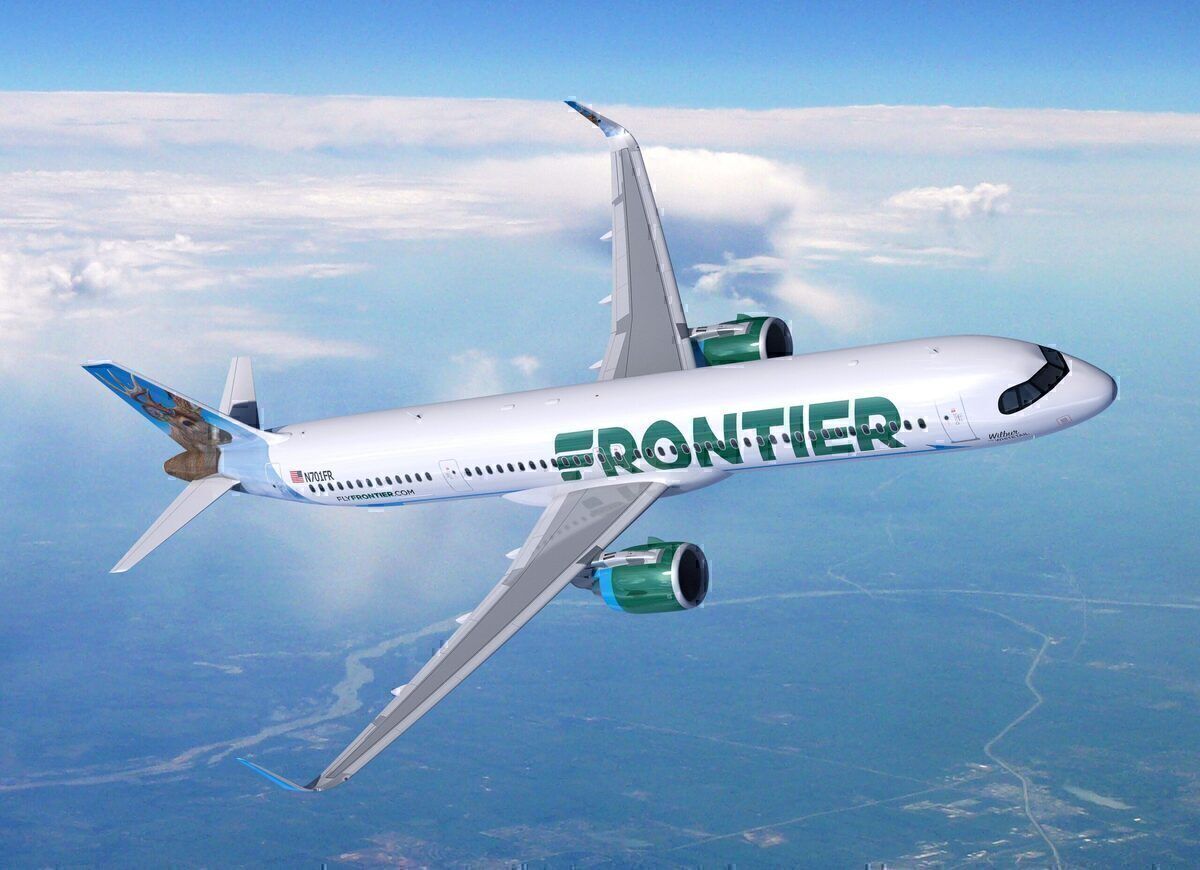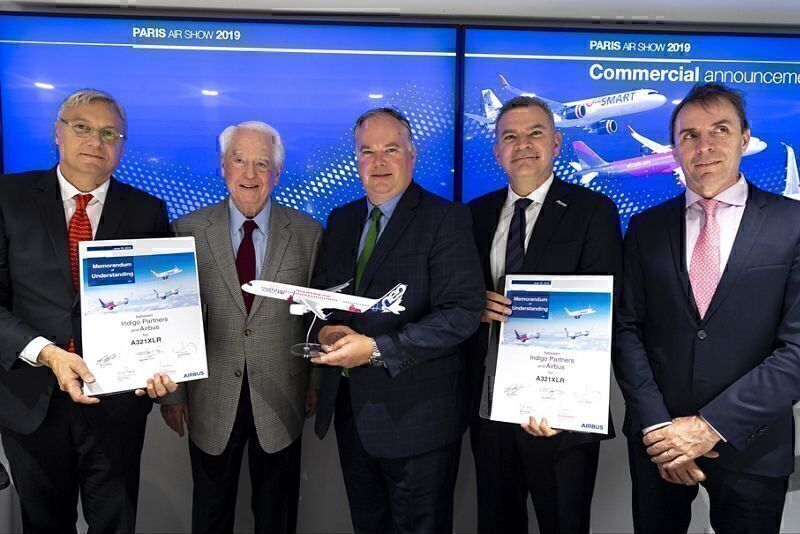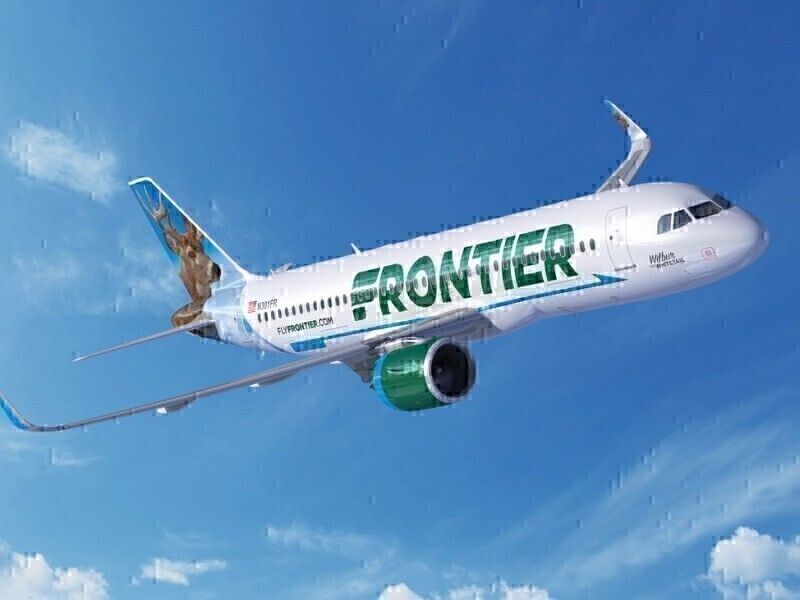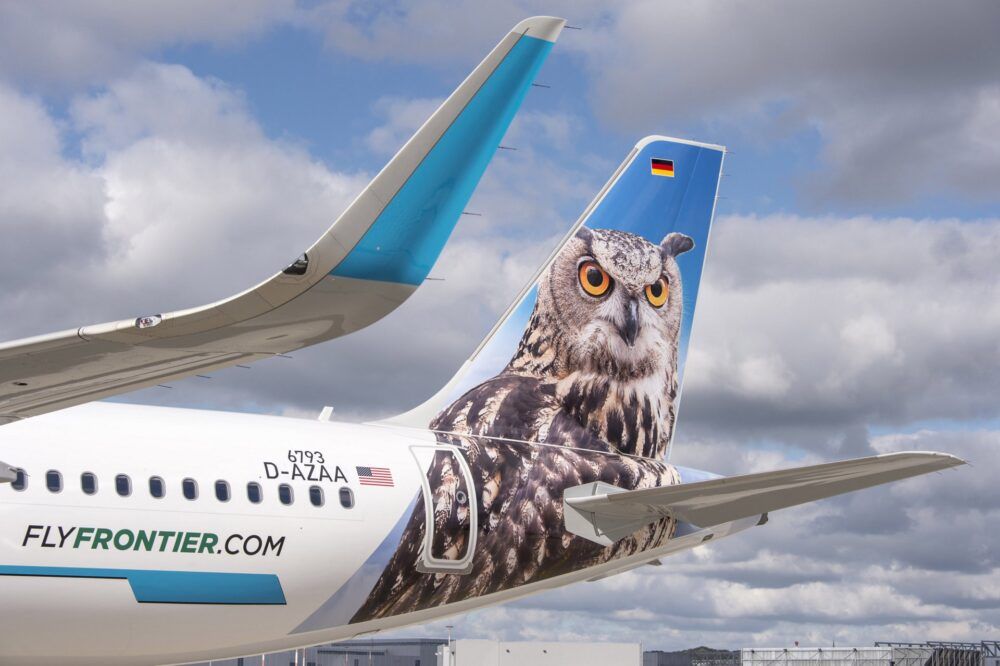Although industry watchers love to speculate about where airlines will fly their new aircraft, the rumors are rarely true. Speaking at a virtual event this week, Barry Biffle, CEO of Frontier Airlines, said that the transatlantic market wasn’t something he was particularly keen on, but mentioned transcon and Hawaii as attractive options.
Transatlantic is not a priority for Frontier’s XLRs
Back in June last year, at Paris Air Show, Indigo Partners signed a significant order for the A321XLR. The group ordered 50 of the type, to be split between some of the airlines it manages. Specifically, these were Europe’s Wizz Air, Chile’s JetSmart and the USA low-cost airline Frontier.
At the time, Indigo said that 18 of the jets were destined for Frontier, something that instantly got tongues wagging regarding what routes the airline would fly. The huge range of the XLR puts a whole host of new destinations within reach of the Denver-based airline, including Hawaii, South America and, of course, Europe.
From its hub, Frontier could easily reach London, Paris, Madrid and a number of other western European cities. It wouldn’t be the first time a low-cost has eyed transatlantic trips. However, at yesterday’s Aviation Festival Americas, CEO Barry Biffle made his opinion of transatlantic operations clear.
“I will tell you, the Atlantic … we’re not as interested in as others. I think the transatlantic is going to have 25 brands flying it. So why would I want to jump in the middle of all that?”
The North Atlantic market is one of the busiest in the world, but it’s also one of the most competitive. He’s probably about right to say some 25 brands will operate across the pond, so if Frontier were to join the throng, it would need to have its price point and product spot on.
JetBlue is promising to disrupt transatlantic fares with its super competitive, high-value offering. In particular, it’s looking to make business class travel more affordable for the average flier. While Frontier doesn’t offer business, it would need to seriously undercut JetBlue’s economy class fares to secure any business in this marketplace.
If Frontier isn’t keen to fly transatlantic with the XLRs, where will it look to use them?
Stay informed: Sign up for our daily aviation news digest.
So far undecided, but plenty of attractive options
Biffle noted that the deliveries of the XLRs are still some years away. The plane won’t even launch until 2023, and it’s not certain if Frontier will be an early recipient of Indigo Partner’s order or not. It could be 2024 or later before they arrive at the carrier.
As such, it makes sense to stall on any commitment to a specific plan for these aircraft and to see how the market plays out over the coming years. Biffle says that nothing has been ruled out but that there are no specific targets decided upon yet. He said,
“So we're still years away. We didn't make the decision with exact lines drawn on the map. What we did is, we said, “okay, with our operating license, where are all the opportunities that exist”.
“You can go to Europe … northern South America, you can go to more places in Central America … you can go to Hawaii, or you can even fly transcon. For example, we can't fly today from Boston to LA with our configuration, it just wouldn't work with the A320, but with the XLR, it would.”
For Frontier, being unable to fly transcon is a bit of an issue. This is a market that is almost as busy as transatlantic and marginally less difficult to break into. With their low fares and efficient planes, Frontier could carve out a niche for itself in this sphere, using its presence at some of the secondary airports on the east and west coast to add point-to-point connectivity across the continent.
Despite Southwest’s entry into Hawaii, there’s almost certainly still room for another competitor. Providing low-cost connections from Denver, or indeed from some of its focus cities such as Las Vegas or Atlanta, would be within reach of the XLR and could see Frontier grabbing a big slice of leisure traffic.
In time, as more of the A320neo arrive at the airline, Frontier could see some action outside of North America. Central and Northern South America are ripe for new entrants, and with price-sensitive travelers, Frontier would be an excellent fit.
For now, however, don’t hold your breath on seeing Frontier’s tails in Europe.




